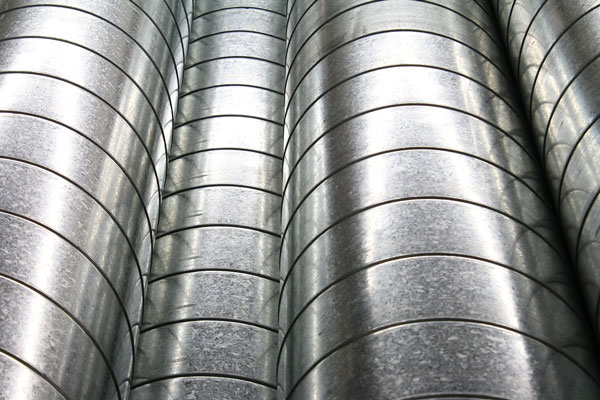
Facilities managers know the importance of keeping their buildings healthy. Good planning, design and preventive maintenance meet budget restraints, are environmentally friendly, and keep occupants happy.
And happy building tenants are healthy, productive people.
But it’s all a balancing act, especially when it comes to a building’s temperature.
Too hot, and productivity slides. Too cold, same thing happens. Other factors crowd in, too, like humidity, personal preference, and even gender and age.
We’ve gathered some best practices — plus some interesting studies — for facility managers and building owners to consider.
Nobody’s Happy
In a survey conducted by construction software review company Software Advice, a full 50 percent of employees report being often unhappy with the temperature in their office. Forrest Burnson, market research associate at SA, broke down the findings as follows:
- Women prefer a temperature of 72 degrees Fahrenheit (with 23 percent preferring it as warm as 80!); men are fine with 70.
- Older people are more frequently more dissatisfied with office temperature than younger employees.
- More workers complain about the cold in winter than the heat in summer (by about 14 percent). But even then, only 26 percent of employees say the office temperature in summer is “just right.”
Burnson points to the frequently cited Helsinki study of 2004 that proves the link between productivity and office temperature: For every degree above 77 in that study, productivity dropped by 2 percent.
Taking Control
Most people don’t just sit and shiver. Building occupants who can’t change the temperature in their office to make it more comfortable tend to do two things: complain, and add or remove layers.
FMs as the first line of defense get the calls that it’s too hot, too cold, too humid, too drafty or any combination of those.
An interesting finding in a 2009 IFMA survey of more than 450 facility managers is that FMs “who manage offices are more apt to receive complaints from workers of being too cold, while others who manage educational facilities, call centers and industrial facilities are more apt to receive hot calls.”
Many building occupants try adjust their comfort levels the only way they can — adding (or discarding) clothing layers or using personal fans to cool off. In most facilities, personal heaters are not allowed, as they are seen as fire hazards.
Some workers are truly inventive when it comes to creating a more comfortable indoor environment. An FM reported that one employee brought in a little wading pool to fit under his desk so he could cool off his feet.
The survey also shows that the majority of facilities have the temperature centrally (not zone) controlled, with no control available to the occupants of the building. Further, 72 percent report that their organization has not looked into systems that would enable occupants to adjust the temperature.
Men Really Are From Mars
If your office is always freezing, you can safely lay the blame at the feet of men.
The team at The Week writes that “most office thermostat temperatures are set in a gender-biased fashion.” This is because the formula used to determine the optimum office temperature was developed in the 1960s, and was based on the male worker. Most men are larger than women and have faster metabolic rates.
Of course, not all males are like Facebook founder Mark Zuckerberg, who keeps his conference rooms at 59 for better focus, the BBC journalist Zaria Gorvett writes. Some are like former President Obama, who kept the Oval Office so hot that “his advisor joked to the New York Times that ‘You could grow orchids in there.’”
Naturally, even a mild deep freeze doesn’t work with everyone.
“If employees are freezing, their output freezes as well,” Seth Porges at Bloomberg writes. “The problem is amplified during the summer, when office buildings typically blast the AC while workers wear lighter clothes.”
Alan Hedge, director of the Human Factors and Ergonomics Laboratory at Cornell University, tells Porges why we’re so affected. “Given that we’re warm-blooded animals, there is an optimal range of temperatures for us inside buildings to allow us to be comfortable. The problem is that in most buildings, the temperature doesn’t really match what would be comfortable for human beings or an effective one to promote productivity.”
Carl Webb of the UK-based HVAC equipment rental company Andrews Sykes writes at BFM Magazine that more than 8 percent of employees surveyed bring hot water bottles to work in an effort to stay warm. He adds that nearly 10 minutes a day are lost to time spent adjusting to workplace temperature, proving a direct correlation with lost productivity.
Webb blames the extremes of temperature in workplaces for increased errors, accidents, low morale and absenteeism, saying that most people feel comfortable with a temperature between 64 and 70 and a relative humidity of 40 to 60 percent.

So, What’s The Perfect Temperature for Productivity?
Well, no one really agrees on that.
According to an infographic at Monster Gulf Career Center, the ideal office temperature to maintain in summer is between 71 and 77 degrees. If the temperature is higher, your performance can decline across the board, from your ability to make decisions and perform simple cognitive tasks to your motor skills.
The Helsinki study used a much lower and narrower range when doing its productivity study, Chelsea Mize at software company PGi writes. “Workplace performance increases with temperatures up to between 69.8 degrees and 71.6 degrees Fahrenheit (21 degrees to 22 degrees Celsius), with the highest productivity at around 71.6 degrees Fahrenheit.”
In fact, while researchers seem to agree that productivity is directly affected by the temperature, none seem to agree on what the best temperature is. The accepted range of temperature levels — as stated by ASHRAE, the American Society of Heating, Refrigerating and Air-Conditioning Engineers — is between 67 and 82 degrees, depending on the season.
That’s quite a spread, ergonomics expert Chris Adams tells Kyle Pinto at ChargeSpot. Productivity still tapers off at the lower end of that range. Adams points to a Cornell study that found that raising office temperatures from 68 to 77 degrees lowered typing errors by 44 percent and raised output by 150 percent.
And Something Else: Cold Buildings Are Wet Buildings
Part of the productivity slowdown in cold temperatures can simply be blamed on the fact that we get sick. Environmental Health Indicators at Massey University in New Zealand reports that “indoor temperatures below 61 degrees F increase the risk of respiratory infections, and below 54 degrees F stress the cardiovascular system.”
And the colder the building is, the more likely it is to be damp, the team at EHINZ writes, as condensation forms more easily on cold surfaces. While ventilation does address humidity, it is more effective in removing excess moisture if the space is well heated.
The problem with humidity is that, while it’s easy to measure, it’s harder to control than temperature — and it affects everything.
“An increased level of humidity tends to increase the level of perceived temperature,” the occupational health, safety environment and risk management team at EHS Today writes. “As humidity changes with the seasons, so will the humidity in your office.”
Humidity levels should be kept above 30 percent in winter, they say, and between 40 and 60 percent in summer. If your HVAC system doesn’t control for humidity, you may need to invest in a humidifier or dehumidifier as a cost-effective solution.
Hot and Humid: A Recipe for Meltdown
Smart Fog, a manufacturer of commercial and industrial humidifiers, says that high humidity is much more of a risk to employee productivity when the office air is dry. While low humidity can be uncomfortable, it is also easily rectifiable with the use of humidifiers and plants.
Air that is saturated with water doesn’t allow the sweat from our bodies to quickly evaporate, Elizabeth Dougherty at MIT’s Ask An Engineer writes. This is why people feel so much hotter when the humidity is high.
And extremely high humidity can be dangerous, she says: “When relative humidity reaches a high enough level, the body’s natural cooling system simply can’t work. Sweat evaporates very slowly, if at all, and the body heats up. In extreme cases, people begin to suffer from heat cramps or heat stroke, which is basically organ failure as the body begins to cook itself.”
Over time, high humidity can lead to mold, which is a health risk to everyone in the building. “When relative humidity (RH) reaches 60 percent, air quality becomes compromised,” the team at Smart Fog writes. “Generic humidifiers that do not have intelligent automation or units that malfunctions are among the leading causes of moisture saturation.”

Beyond Productivity
As mentioned, it’s not just worker productivity that can be adversely affected by temperature. Because each occupant of every facility is impacted by the facility’s indoor environment, that means everyone is at risk. That includes staff and patients in healthcare facilities, for example, and the teachers and students in schools.
When looking at schools, the Environment Protection Agency has found that reducing temperatures and keeping humidity levels “modest” allow students to function at their best.
The EPA also writes that children respond to moderate changes in room temperature. A reduction from 77 to 68, for example, helps with their abilities to perform mental tasks that require concentration, such as in math and comprehension.
Blairs Air, a Florida HVAC company, cites the National Longitudinal Survey, which shows a correlation between classroom temperatures and test scores. Above 70 degrees, test scores start to decline. Scores bottom out once the room temperature hits 79 degrees or more.
“Researchers concluded that this was because the brain exerts itself to control body temperature, which leaves less mental energy and capacity to perform other tasks and less working memory to recall what was learned,” the team at Blairs Air writes. “A room that’s too hot or too cold can lead to students making more mistakes.”
The Fix Is Tech
Controlling a building’s indoor environment so that the majority of occupants are comfortable is really a matter of three things:
- incorporating technology into the original design,
- giving more control to individuals
- and allowing FMs to monitor facility sectors.
These changes are on their way.
“[M]ore nuanced monitoring of heat levels, climate control office chairs and integrated fans are already on the agenda and are likely to be permanent features of the office of the future,” Herpreet Kaur Grewal at FM World writes.
There are solutions available at the design stage, too.
Take SimScale, a cloud-based simulation tool that helps designers and engineers estimate how big HVAC systems must be for a given space. Six factors inform that company’s calculations: four environmental (air temperature, air velocity, radiant temperature and relative humidity) and two personal (clothing and metabolic rate).
There are also apps like Comfy, which connect to a facility’s HVAC system, give building occupants immediate control, allowing them to choose a quick stream of warm or cool air to modify the temperature in their spaces.
And, as the WSJ reports, sensors throughout buildings will allow occupants to create unique “thermal bubbles” via smartphone apps to keep them comfortable.
Credits:
Astryd_MADBrooklynJohn
Ellie Pritts

